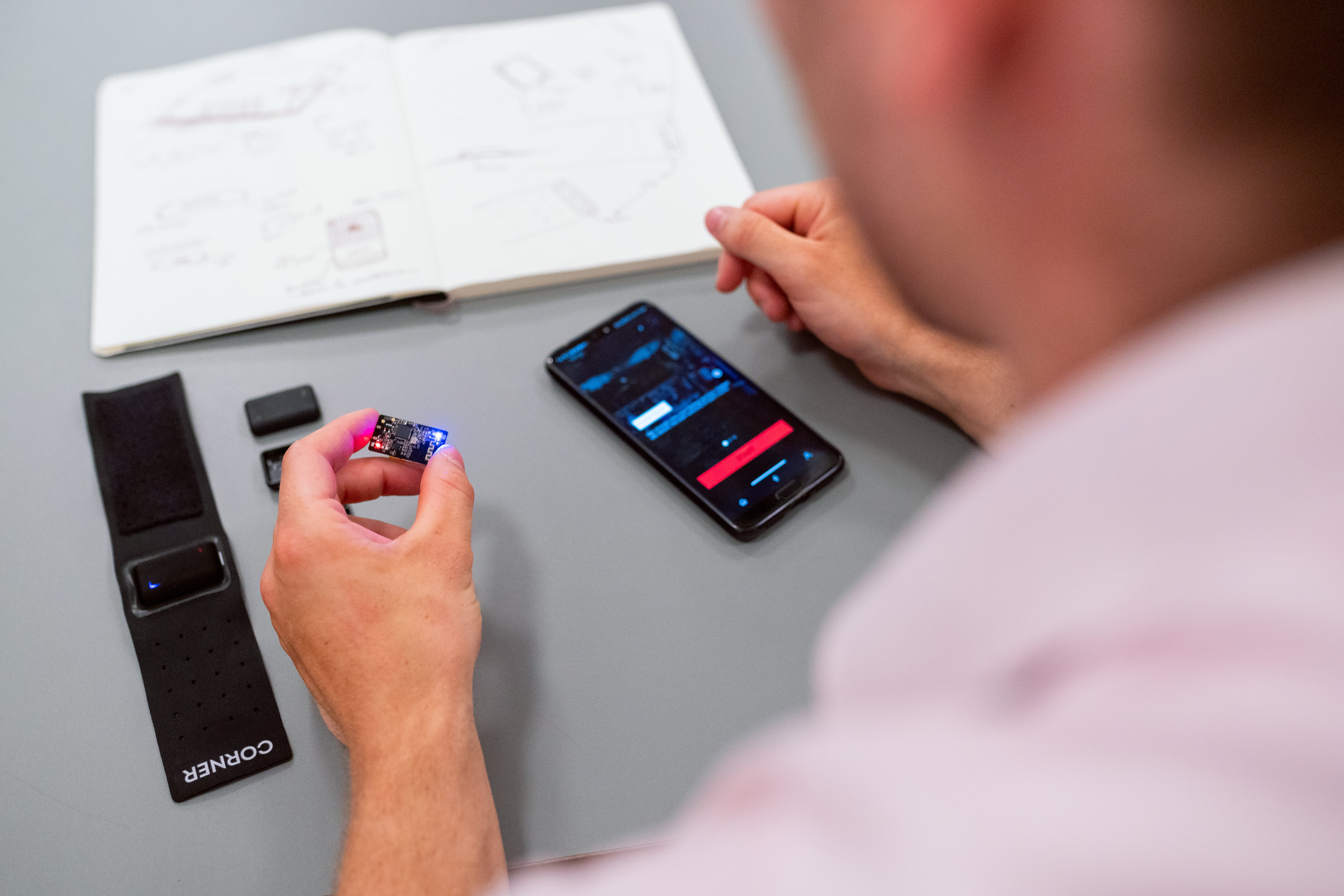Overcoming Mobile App Development Hurdles: Top Tips!

Identifying Common Development Challenges

Strategies for Effective Requirement Gathering

Best Practices for Seamless User Experience
Ensuring Security and Compliance Measures

Testing and Quality Assurance Techniques

Best Way to Design Mobile App Development: Top Tips

The world of mobile app design is an ever-evolving landscape, teeming with innovation and endless possibilities. As businesses strive to create apps that not only meet but exceed user expectations, understanding the fundamentals of app design becomes crucial. This journey begins with a solid foundation in the principles of design, user experience (UX), and user interface (UI) that form the backbone of any successful mobile application.
At the heart of mobile app design lies the need to create an intuitive, seamless, and engaging experience for users. This involves a delicate balance between aesthetics and functionality, ensuring that the app is not only visually appealing but also easy to navigate and use. Key considerations include the layout, color schemes, typography, and interactive elements that collectively contribute to the overall user experience.
Moreover, staying updated with the latest design trends and technological advancements is essential for staying ahead in the competitive market. Leveraging tools and frameworks that streamline the design process can significantly enhance efficiency and productivity, allowing designers to bring their creative visions to life more effectively.
Whether you are a seasoned designer or a newcomer to the field, understanding these core principles is the first step towards creating an app that stands out in the crowded marketplace. Ready to dive deeper into the best way to design mobile app development? Partner with Biz4Solutions to transform your app ideas into reality with cutting-edge design and development solutions!
Understanding User Needs and Preferences

One of the most critical aspects of mobile app design is understanding user needs and preferences. This involves a comprehensive analysis of the target audience to ensure that the app aligns with their expectations and solves their problems effectively. A deep understanding of the user base can significantly influence the design choices and features incorporated into the app.
To gain insights into user needs, conducting thorough market research is imperative. This can include surveys, interviews, focus groups, and analyzing user feedback from existing products. The goal is to identify pain points, preferences, and behaviors that can shape the app’s functionality and user experience.
In addition to primary research, leveraging data analytics is another powerful method to understand user behavior. By examining metrics such as user engagement, retention rates, and usage patterns, designers can make data-driven decisions that enhance the app’s usability and relevance.
Creating user personas is a practical approach to embodying the characteristics and needs of the target audience. These personas serve as a reference throughout the design process, ensuring that every design element and feature caters to the end user’s expectations. Furthermore, incorporating user feedback through beta testing and iterative design can lead to continuous improvements and a more user-centric app.
Ultimately, a deep understanding of user needs and preferences is the cornerstone of designing a successful mobile app. It ensures that the app not only meets but anticipates and exceeds user expectations, leading to higher satisfaction and loyalty.
Creating an Intuitive User Interface
Creating an intuitive user interface (UI) is essential for the success of any mobile app. An intuitive UI ensures that users can navigate the app effortlessly, leading to a seamless and enjoyable user experience. The goal is to make the app so user-friendly that even new users can understand and use its functionalities without extensive instructions.
A key principle in designing an intuitive UI is simplicity. This means keeping the design clean and uncluttered, avoiding unnecessary elements that could confuse the user. Clear and concise labels, consistent icons, and straightforward navigation paths are crucial elements of a simple yet effective UI.
Another important aspect is to follow established design conventions and guidelines. For example, adhering to platform-specific design standards, such as Material Design for Android or Human Interface Guidelines for iOS, can help create a familiar and intuitive experience for users. These guidelines provide best practices for layout, typography, color schemes, and interaction patterns that enhance usability.
Moreover, the use of visual hierarchy is vital in guiding users through the app. By strategically placing elements like buttons, menus, and content, designers can direct the user’s attention and make it easy to find essential features. Visual cues such as color contrast, size, and spacing can further emphasize important elements and actions.
User feedback and usability testing play a critical role in refining the UI. Through iterative testing, designers can identify pain points and areas of confusion, making necessary adjustments to optimize the user experience. By prioritizing the user’s needs and preferences, an intuitive UI can be achieved, resulting in higher user satisfaction and engagement.
Ensuring Seamless User Experience

Ensuring a seamless user experience (UX) is paramount for the success of any mobile app. A seamless UX means that users can interact with the app without encountering any friction or frustration, making their journey smooth and enjoyable from start to finish.
One of the primary strategies for achieving a seamless UX is to focus on performance optimization. This involves minimizing load times, reducing app crashes, and ensuring that the app runs smoothly across different devices and operating systems. Techniques such as efficient coding practices, compressing media files, and using content delivery networks (CDNs) can significantly enhance app performance.
Another critical element is providing a consistent experience across all touchpoints. Whether a user is accessing the app on a smartphone, tablet, or desktop, the interface and functionality should remain consistent. This consistency helps users feel comfortable and familiar with the app, reducing the learning curve and enhancing usability.
Personalization also plays a significant role in creating a seamless UX. By leveraging data analytics and user preferences, developers can tailor the app experience to meet individual user needs. Features such as personalized content recommendations, customized notifications, and adaptive interfaces can make users feel valued and engaged.
Furthermore, intuitive navigation is essential for a seamless UX. Users should be able to find what they are looking for without unnecessary clicks or complex pathways. Implementing a clear and logical navigation structure, along with search functionality and breadcrumb trails, can greatly improve the user journey.
Finally, gathering and analyzing user feedback is crucial for continuous improvement. By actively listening to user suggestions and addressing any issues promptly, developers can refine the app to better meet user expectations. Regular updates and enhancements based on user feedback can ensure that the app remains relevant and delivers a superior user experience over time.
Incorporating Feedback and Iterations

Incorporating feedback and iterations is a critical component of the best way to design mobile app development. This process not only refines the app’s functionality but also ensures it meets user expectations and market demands.
Regularly gathering user feedback is the first step. This can be achieved through various methods, including in-app surveys, user reviews on app stores, and direct feedback channels like customer support. By collecting qualitative and quantitative data, developers can gain valuable insights into user satisfaction, pain points, and feature requests.
Once feedback is collected, it is essential to analyze and prioritize it effectively. Not all feedback will be actionable, so developers must identify common themes and issues that align with the app’s goals and user needs. Tools like sentiment analysis and feedback categorization can help streamline this process.
After identifying key areas for improvement, the next step is to implement these changes through iterative development. Iteration allows developers to make incremental enhancements, test new features, and fix bugs in a controlled and manageable manner. This approach minimizes risks and ensures that updates improve the app without introducing new issues.
Agile methodologies, such as Scrum or Kanban, are particularly beneficial for managing iterations. These frameworks promote collaboration, flexibility, and continuous delivery, enabling development teams to respond swiftly to feedback and adapt to changing requirements.
Additionally, beta testing serves as a vital stage in the iteration process. By releasing a beta version to a select group of users, developers can gather real-world usage data and identify potential problems before a full-scale release. This pre-launch testing phase helps ensure that the final product is robust, user-friendly, and free of critical issues.
Ultimately, the cycle of incorporating feedback and iterating based on user input fosters a culture of continuous improvement. It demonstrates a commitment to delivering a high-quality app that evolves in tandem with user expectations, leading to increased user satisfaction, loyalty, and long-term success.
Leveraging Latest Design Trends and Technologies

Staying ahead in the competitive mobile app market requires leveraging the latest design trends and technologies. This approach not only enhances the aesthetic appeal of your app but also improves its functionality and user experience, making it a cornerstone of the best way to design mobile app development.
One prominent trend is the use of minimalistic design. This style focuses on simplicity, using clean lines, ample white space, and intuitive navigation to create an uncluttered user interface. Minimalistic design helps users interact with apps more efficiently, reducing cognitive load and improving overall satisfaction.
Another significant trend is the integration of dark mode. Dark mode not only offers an alternative visual theme that can be easier on the eyes in low-light conditions, but it also helps in conserving battery life on devices with OLED screens. Incorporating dark mode options within your app can cater to user preferences and enhance the overall user experience.
In terms of technology, Artificial Intelligence (AI) and Machine Learning (ML) are revolutionizing mobile app development. AI and ML can be used to create personalized experiences, such as tailored content recommendations, intelligent search functionalities, and predictive text features. These technologies enable apps to learn from user behavior and adapt accordingly, providing a more engaging and relevant user experience.
Moreover, the advent of Augmented Reality (AR) and Virtual Reality (VR) is opening up new possibilities in mobile app design. AR and VR can transform how users interact with apps by providing immersive, interactive experiences. For example, AR can be used in retail apps to allow users to visualize products in their space before making a purchase, while VR can create virtual tours or simulations for educational and training purposes.
Finally, adopting Progressive Web App (PWA) technology can significantly enhance the performance and accessibility of your app. PWAs combine the best of web and mobile app functionalities, providing a seamless user experience across different devices and platforms. They offer offline capabilities, fast load times, and improved engagement, making them a valuable addition to your mobile app strategy.
By embracing these latest design trends and technologies, you can ensure your app stays relevant, competitive, and highly functional. At Biz4Solutions, we specialize in integrating cutting-edge design and technology to create innovative mobile apps. Contact us today to learn how we can help you elevate your mobile app development.
